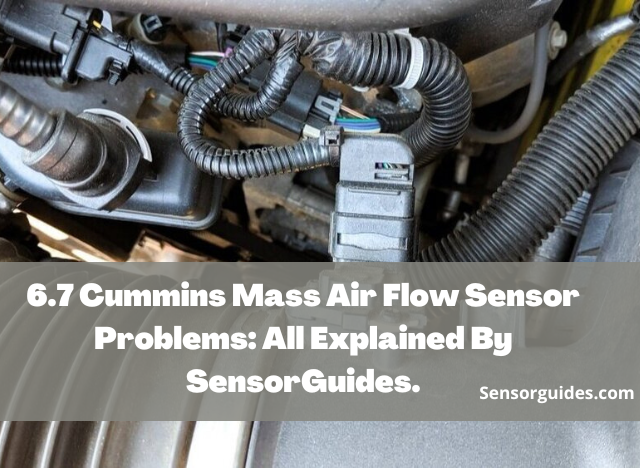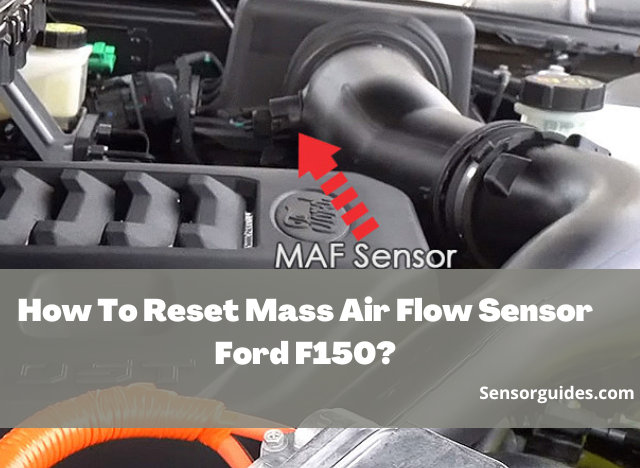MAF Sensor Cleaner Alternatives; All You Need To Know
The Mass Airflow Sensor (MAF) is a critical component in your vehicle’s engine management system, responsible for measuring the amount of air entering the engine. A clean and properly functioning MAF sensor is vital for maintaining optimal engine performance and fuel efficiency.
While commercial MAF sensor cleaners are available, there are alternative cleaning solutions you can explore. In this article, we will discuss some effective MAF sensor cleaner alternatives that you can try. Welcome to Sensor Guides.
Table of Contents
What are the real mass air flow sensor cleaner ingredients?
Mass Airflow Sensor (MAF) cleaner typically contains a blend of specialized chemicals designed to safely and effectively clean the delicate components of the MAF sensor. The exact formulation of MAF sensor cleaner can vary depending on the brand and manufacturer, but some common ingredients found in these cleaners include:
Isopropyl Alcohol: This is a key ingredient in many MAF sensor cleaners. Isopropyl alcohol is a solvent that helps dissolve dirt, oil, and contaminants from the MAF sensor without leaving harmful residues.
Propellant: MAF sensor cleaners are often aerosol sprays, and the propellant is what allows the cleaner to be dispensed in a controlled manner. Common propellants include hydrocarbons or compressed air.
Hydrocarbon Solvent: Some MAF sensor cleaners may contain additional hydrocarbon solvents to aid in dissolving stubborn contaminants and ensuring a thorough cleaning.
Lubricants: Some MAF sensor cleaners may include lubricating agents to help protect the sensor’s delicate components during and after cleaning.
Deionized Water: To ensure that the cleaner is safe for sensitive electronic components, deionized water may be used as a diluent to reduce the concentration of the active ingredients.
It’s essential to use a MAF sensor cleaner specifically designed for electronic components and follow the manufacturer’s instructions when cleaning your MAF sensor to avoid any potential damage.
What are the MAF Sensor Cleaner Alternatives?
The DIY Approach: Isopropyl Alcohol Solution
A. Isopropyl Alcohol and its Cleaning Properties
Isopropyl alcohol, also known as rubbing alcohol, is a common household item with excellent cleaning properties. Its ability to dissolve dirt, oil, and contaminants makes it a viable option for cleaning the MAF sensor.
B. Preparing the Isopropyl Alcohol Mixture
To create the cleaning solution, mix a small amount of isopropyl alcohol (70% concentration or higher) with distilled water. The water helps dilute the alcohol to a safe level for the delicate MAF sensor components.
C. Step-by-Step Guide to Cleaning the MAF Sensor
- Locate the MAF sensor in your vehicle. It is typically positioned between the air filter housing and the engine’s intake manifold.
- Disconnect the electrical connector from the MAF sensor.
- Remove the MAF sensor carefully from the intake.
- Gently spray the isopropyl alcohol solution on the sensor’s delicate wires and components.
- Allow the sensor to air dry completely before reinstalling it.
White Vinegar Solution for MAF Sensor Cleaning
A. White Vinegar as a Natural Cleaning Agent
White vinegar is another natural cleaning agent that can be effective in removing dirt and grime from the MAF sensor. Its acidity helps break down contaminants, making it easier to clean.
B. Creating the White Vinegar Cleaning Solution
Mix equal parts of white vinegar and distilled water to make the white vinegar cleaning solution. This dilution ensures that the vinegar’s acidity is safe for the MAF sensor.
C. Cleaning the MAF Sensor with White Vinegar
- Disconnect the MAF sensor’s electrical connector and carefully remove it from the intake.
- Soak a soft cloth or cotton swab in the white vinegar solution.
- Gently wipe the MAF sensor’s wires and components with the soaked cloth or swab.
- Allow the sensor to air dry completely before reinstalling it.
Using Electrical Contact Cleaner for MAF Sensor Cleaning
A. Understanding Electrical Contact Cleaners
Electrical contact cleaners are designed to remove dirt, dust, and contaminants from electrical components without leaving any residue. They are safe to use on delicate electronic parts, making them suitable for MAF sensor cleaning.
B. Selecting the Right Electrical Contact Cleaner
Ensure you choose an electrical contact cleaner that is safe for use on electronic components and does not leave behind any harmful residues.
C. Best Practices for Cleaning with Electrical Contact Cleaner
- Follow the instructions provided on the electrical contact cleaner’s packaging.
- Disconnect the MAF sensor’s electrical connector and remove it from the intake.
- Apply the cleaner directly to the MAF sensor’s wires and components.
- Allow the sensor to air dry thoroughly before reinstalling it.
Can you use petrol to clean air flow sensor?
Using petrol or gasoline to clean the Mass Airflow Sensor (MAF) is not recommended and can be potentially dangerous. Petrol is a highly flammable liquid, and introducing it to the delicate components of the MAF sensor can lead to fire hazards and cause damage to the sensor itself.
MAF sensors have intricate wires and delicate components that can be easily damaged by harsh chemicals. Petrol is not designed for electronic cleaning and may leave harmful residues, affecting the sensor’s accuracy and performance. Furthermore, the fumes from petrol can be hazardous to health.
Instead of petrol, it is best to use appropriate cleaning solutions specifically designed for cleaning electronic components like MAF sensors. Isopropyl alcohol, electrical contact cleaner, or specialized MAF sensor cleaners are safer and more effective options.
When cleaning the MAF sensor, always follow the manufacturer’s recommendations and use the proper cleaning methods. If unsure or uncomfortable with cleaning the sensor yourself, it is advisable to seek professional help from a qualified mechanic to avoid any potential damage or safety risks.
What are the Benefits and Limitations of DIY MAF Sensor Cleaning?
A. Cost-Effectiveness and Convenience
DIY MAF sensor cleaner alternatives can be more cost-effective than purchasing commercial cleaners. Many of these alternatives are readily available in households, making them convenient options.
B. Potential Risks and Precautions
While DIY cleaning methods can be effective, there are risks involved, especially if not performed correctly. Mishandling the MAF sensor can cause damage and lead to further issues.
C. When to Consider Professional Cleaning
If you are unsure about performing the cleaning yourself or if the MAF sensor issues persist, it’s best to seek professional assistance. Automotive experts have the experience and tools to handle MAF sensor cleaning safely and effectively.
Conclusion
Regular maintenance and cleaning of the Mass Airflow Sensor (MAF) are crucial for maintaining optimal engine performance and fuel efficiency. While commercial MAF sensor cleaners are available, DIY alternatives like isopropyl alcohol, white vinegar, and electrical contact cleaners can be effective and cost-efficient. However, it is essential to follow proper procedures and take necessary precautions to avoid damaging the sensitive components of the MAF sensor. If you are uncertain about performing the cleaning yourself or face persistent MAF sensor issues, consider consulting a professional mechanic for expert assistance.




